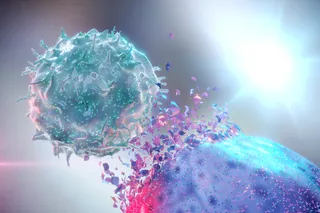Forensic scientists of the future may soon have a new tool at their disposal. Given a drop of blood, researchers in the Netherlands have roughly determined the age of the person it came from. But for now, it really is rough--the researchers found they could only estimate a person's age to within 9 years. Currently, a crime scene investigator who obtained a spot of blood can check its DNA to see if it matches a known suspect or someone in a law enforcement database, and can use the DNA to determine a few other characteristics like gender and eye color. But age is tougher to estimate. Lead researcher Manfred Kayser, who works on forensic molecular biology at Erasmus University Medical Centre, explains that the best methods of determining age rely on testing bones or teeth, but he wanted to find a method that didn't require skeletal remains.
While scouring the ...














